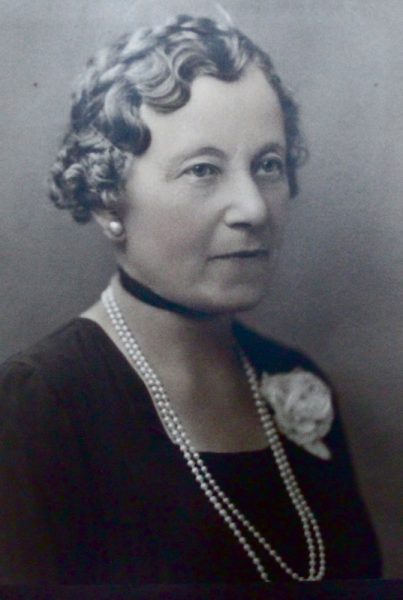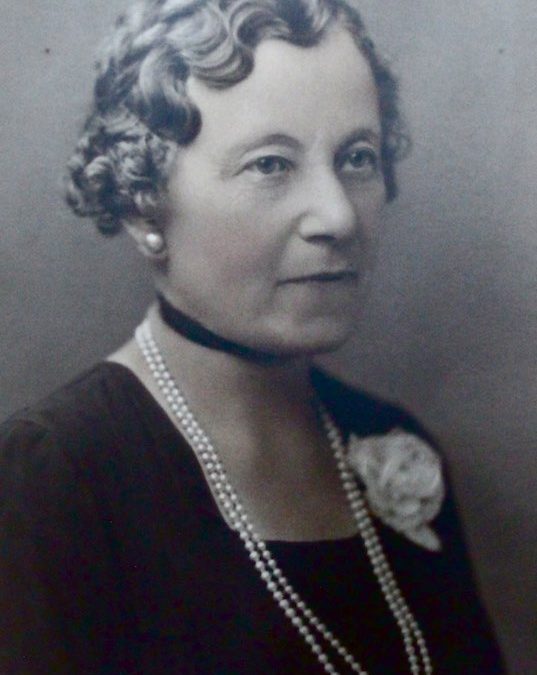Written by Elizabeth Heffernan, RAHS Volunteer
To celebrate Women’s History Month, the Royal Australian Historical Society will highlight Australian women that have contributed to our history in various and meaningful ways. You can browse the women featured on our new webpage, Women’s History Month.
The Royal Australian Historical Society would not be where it is today without the remarkable contributions of one of its founding female members, Josephine Ethel Foster.

Ethel Foster, n.d. [RAHS Photograph Collection]
The turn of the century was a time when many of Sydney’s older landmarks were being replaced, urging historically minded Australians like Ethel and her husband to capture the images and memories of early Sydney before they vanished completely. [1]
Even before founding the Society, the Fosters were active participants in the preservation of Sydney’s historic landmarks. From 1900 they devoted two years worth of weekends to photographing, sketching, and recording the inscriptions of over 700 monuments in Sandhills Cemetery before their removal for the construction of Sydney’s Central Railway Station. Today these photographs are collected in five volumes in the Mitchell Library and are an invaluable resource to historians researching the subject.
Ethel also photographed a number of iconic Sydney buildings before their demolition, donating these glass lantern slides to the RAHS collection as windows into the city’s past. [2]
As an active member of the Historical Society, Ethel was elected its first female Councillor on 21 February 1912. She served in this role on three separate occasions, from 1912–16, 1919–21, and 1923–39, moving into the Vice-President position from 1940–43.
As the first woman awarded the Society Fellowship in 1924, Ethel later founded the RAHS Women’s Auxiliary in 1927, aiming to involve “every lady member of the Society” as well as to raise funds for the purchase of a building. She was president of the Auxiliary for the rest of her life, and oversaw the completion of its main goal with the purchase of a three-storey wool store near Circular Quay in 1940, which was refurbished and opened as History House in 1941. The lounge room in the building was named the Foster Room in her honour. [3]
During her lifetime, Ethel saw the Society’s membership grow from less than 20 members at its establishment, to over 1000 by the time of her death in 1955. In her 55 years of Society membership she claimed to never have missed an Annual General Meeting.
Upon her passing, she left the RAHS a large, generous, and invaluable bequest: a significant financial donation and, most importantly, her collection of over 250 books, 30 volumes of press clippings, and 381 glass slides for the RAHS Library. Today, the Fosters are commemorated by the annual Foster Prize awarded to the top Australian history student in the NSW Higher School Certificate. [4]
Ethel Foster was remembered in her obituary as an intelligent, generous, and hard-working woman who accomplished much for historical preservation and women’s involvement in the first half of the twentieth century. The Biblical quote chosen by Ethel for her own epitaph, “She hath done what she could,” is therefore fitting – but perhaps even more so is the description of Ethel by her husband as they finished their work in the Sandhills Cemetery. [5] “The lady seated on the crooked bole of the ‘monotoca’ wears a smile of satisfaction,” said Arthur at the conclusion of his 1918 lecture on the topic. “Her labour of love is finished”. [6]
References:
[1] Andrew Houison, ‘Some Presidential Addresses: Dr Andrew Houison, 15 March 1901’, Journal of the Royal Australian Historical Society 87, vol. 1 (2001), pp. 158–59.
[2] Anne-Maree Whitaker, ‘Arthur and Ethel Foster’, History, March 2006, p. 7.
[3] Whitaker, ‘Arthur and Ethel Foster’, p. 7.
[4] Whitaker, ‘Arthur and Ethel Foster’, p. 8.
[5] K.R. Cramp, ‘In Memoriam: J. E. Foster’, Journal of the Royal Australian Historical Society 41, no. 5 (1955), p. 196.
[6] Whitaker, ‘Arthur and Ethel Foster’, p. 8.


0 Comments